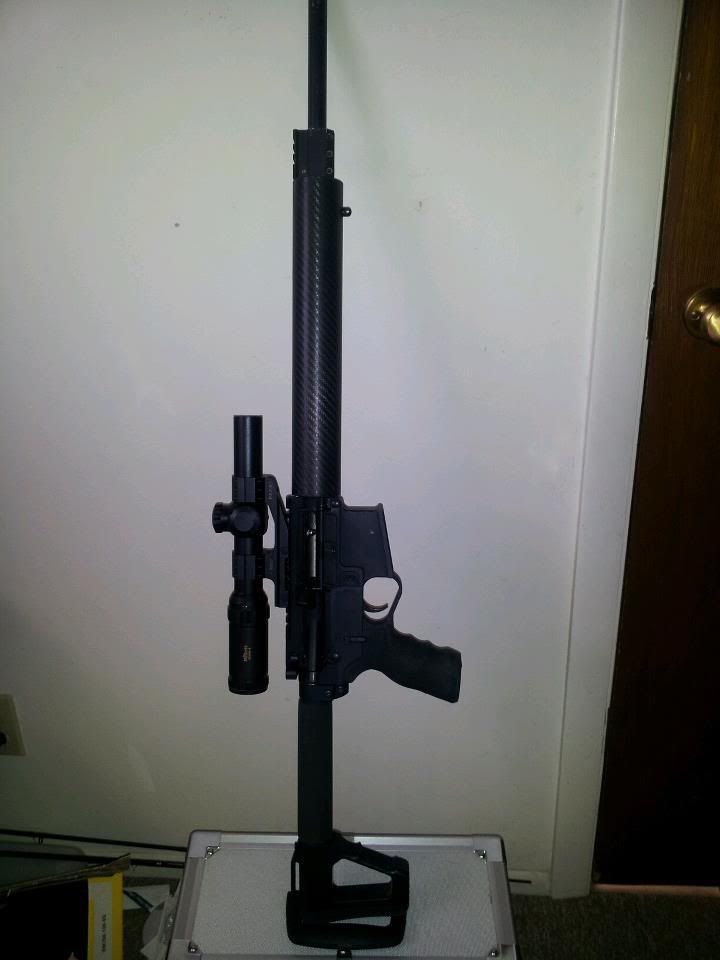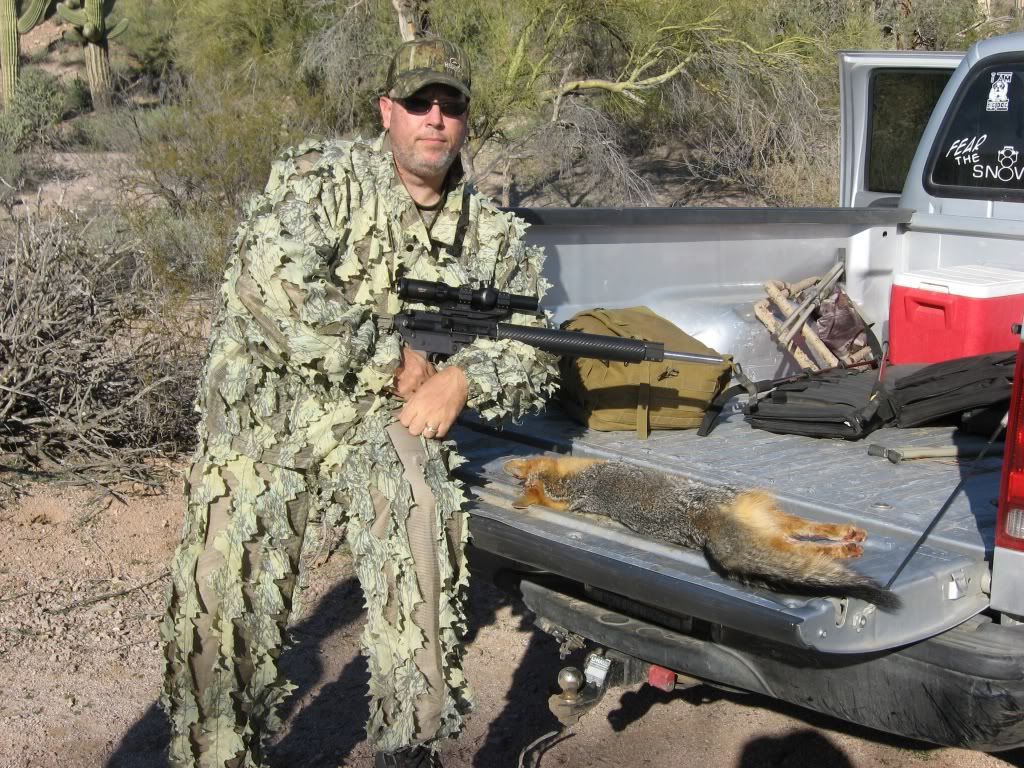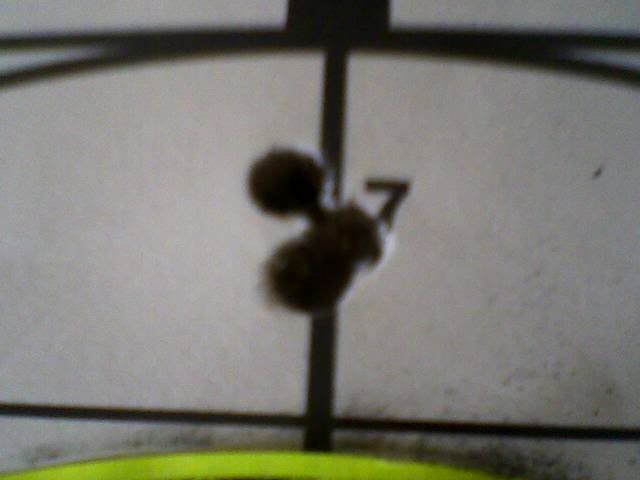scottmilk9
New member
I just wanted to post up a small write up of my opinion and observations of my 20 Practical.
The Specialized Dynamics .20 Practical
Back Story
Do you have hundreds or even thousands of 223 cases lying around? So do I. Many predator hunters start off their stable of rifles with a .223 remington. It is a very attractive starting caliber due to the vast availability of ammunition, and the low prices of that ammunition. So a lot of us cut our teeth by spending hours the range with the .223, and thus end up with a lot of brass. While the .223 is a great utility caliber, it has it’s shortcomings. For many, they look for a cartridge that is easier to shoot at longer ranges. In the AR platform, the .204 ruger jumps out to people with ballistics that closely mirror the .22-250. The problem is the expense of .204 ruger ammunition. Factory loads can cost over $1 per shot, so many look to handload. There is a large variety of .20 bullets on the market; the hang up with the .204 is brass. Factory brass is available, but it can be spendy. Some people will try to “make” their own brass by trying to reform a .223 casing, but that is not advisable as you can have bulging. The answer: the .20 Practical. The attractive thing about the .20 Practical is that it uses .223 brass, .223 S-type dies and you can get similar results as a .204 ruger.
Predator hunters demand a lot of different performance envelopes for a cartridge. It has to have speed, range, accuracy, while still having a lot of stopping power, and being easy on fur. This is a tall order. I have spent a lot of time researching and chambering AR’s in a variety of calibers. I’ve shot many coyotes with the .223, several more with other calibers, and have gotten a mixed bag of results. Several calibers have issues with range, others lack power, once you find a cartridge with enough power and range it tends to hammer the fur that some people want to harvest. Late last summer I ordered a 20 Practical reamer to see if this caliber was the “golden bb”.

The Test Platform
We chambered a 20” barrel, built it up on my LW (light weight) platform, consisting of a flat top upper receiver, Carbon fiber free float tube, picatinny rail gas block and a Young MFG bolt/carrier assembly. The lower was topped off with a Ace Socom stock (for length of pull), Ergo Deluxe grip and a Geissele 2 stage trigger.
I loaded some ammo with 32gr V-max bullets and 25gr of Ramshot Tac powder. I figured it was a decent starting load. I shot 4 shots to zero my scope and chrono’d the next 5 while shooting groups. I shot under ½” at 100yds and got an average of 3760fps. I figured since it grouped so well and got decent velocity, why bother with any further load development.

In the Field
I went out with some buddies in search for some fur. We hit the hills for some bobcat and fox; unfortunately we didn’t run into anything until our last stand of the day.
We called in a beautiful gray fox, I saw him coming from 300 yards away, had him in my scope the whole way, noticing his demeanor, stopping every so often to check the prey in distress sound. He got within 50 yards when I put the 32gr V-max into its quartering away side. Let’s just say that the V-max bullets aren’t very fur friendly. The expansion is violent. The fox went down hard, but the bullet did some serious damage. It was split right down the belly line and made easy skinning for Snowman Mo.

I don’t think there is any question on the accuracy or knockdown power of this great little cartridge. With the right bullet, I think that it would be very easy to handload a fur friendly .20 Practical. We have seen a similar result in the .17 remington. Higher velocities result in more energy, but it has to be controlled if you want to save the fur. Polymer tipped bullets are not going to be the best choice for fur harvesting, but a standard hollowpoint, at these kind of high velocities is producing some solid results. Hard putdowns, small holes.
We have the results of the cartridge on foxes, so now our next challenge is to put down a bobcat and a coyote. If the .17 remington is any indicator of a small, fast moving caliber, then coyotes and bobcats should present no real trouble with the 20 Practical.
Summary
With the ease of reloading, availability of commercial brass and the use of standard AR-15 magazines, the .20 Practical is a great choice for all those who like the ballistics of the .204 ruger but want something easier and less expensive to reload. We might just be one step closer to the “golden bb”?
The Specialized Dynamics .20 Practical
Back Story
Do you have hundreds or even thousands of 223 cases lying around? So do I. Many predator hunters start off their stable of rifles with a .223 remington. It is a very attractive starting caliber due to the vast availability of ammunition, and the low prices of that ammunition. So a lot of us cut our teeth by spending hours the range with the .223, and thus end up with a lot of brass. While the .223 is a great utility caliber, it has it’s shortcomings. For many, they look for a cartridge that is easier to shoot at longer ranges. In the AR platform, the .204 ruger jumps out to people with ballistics that closely mirror the .22-250. The problem is the expense of .204 ruger ammunition. Factory loads can cost over $1 per shot, so many look to handload. There is a large variety of .20 bullets on the market; the hang up with the .204 is brass. Factory brass is available, but it can be spendy. Some people will try to “make” their own brass by trying to reform a .223 casing, but that is not advisable as you can have bulging. The answer: the .20 Practical. The attractive thing about the .20 Practical is that it uses .223 brass, .223 S-type dies and you can get similar results as a .204 ruger.
Predator hunters demand a lot of different performance envelopes for a cartridge. It has to have speed, range, accuracy, while still having a lot of stopping power, and being easy on fur. This is a tall order. I have spent a lot of time researching and chambering AR’s in a variety of calibers. I’ve shot many coyotes with the .223, several more with other calibers, and have gotten a mixed bag of results. Several calibers have issues with range, others lack power, once you find a cartridge with enough power and range it tends to hammer the fur that some people want to harvest. Late last summer I ordered a 20 Practical reamer to see if this caliber was the “golden bb”.

The Test Platform
We chambered a 20” barrel, built it up on my LW (light weight) platform, consisting of a flat top upper receiver, Carbon fiber free float tube, picatinny rail gas block and a Young MFG bolt/carrier assembly. The lower was topped off with a Ace Socom stock (for length of pull), Ergo Deluxe grip and a Geissele 2 stage trigger.
I loaded some ammo with 32gr V-max bullets and 25gr of Ramshot Tac powder. I figured it was a decent starting load. I shot 4 shots to zero my scope and chrono’d the next 5 while shooting groups. I shot under ½” at 100yds and got an average of 3760fps. I figured since it grouped so well and got decent velocity, why bother with any further load development.

In the Field
I went out with some buddies in search for some fur. We hit the hills for some bobcat and fox; unfortunately we didn’t run into anything until our last stand of the day.
We called in a beautiful gray fox, I saw him coming from 300 yards away, had him in my scope the whole way, noticing his demeanor, stopping every so often to check the prey in distress sound. He got within 50 yards when I put the 32gr V-max into its quartering away side. Let’s just say that the V-max bullets aren’t very fur friendly. The expansion is violent. The fox went down hard, but the bullet did some serious damage. It was split right down the belly line and made easy skinning for Snowman Mo.

I don’t think there is any question on the accuracy or knockdown power of this great little cartridge. With the right bullet, I think that it would be very easy to handload a fur friendly .20 Practical. We have seen a similar result in the .17 remington. Higher velocities result in more energy, but it has to be controlled if you want to save the fur. Polymer tipped bullets are not going to be the best choice for fur harvesting, but a standard hollowpoint, at these kind of high velocities is producing some solid results. Hard putdowns, small holes.
We have the results of the cartridge on foxes, so now our next challenge is to put down a bobcat and a coyote. If the .17 remington is any indicator of a small, fast moving caliber, then coyotes and bobcats should present no real trouble with the 20 Practical.
Summary
With the ease of reloading, availability of commercial brass and the use of standard AR-15 magazines, the .20 Practical is a great choice for all those who like the ballistics of the .204 ruger but want something easier and less expensive to reload. We might just be one step closer to the “golden bb”?




